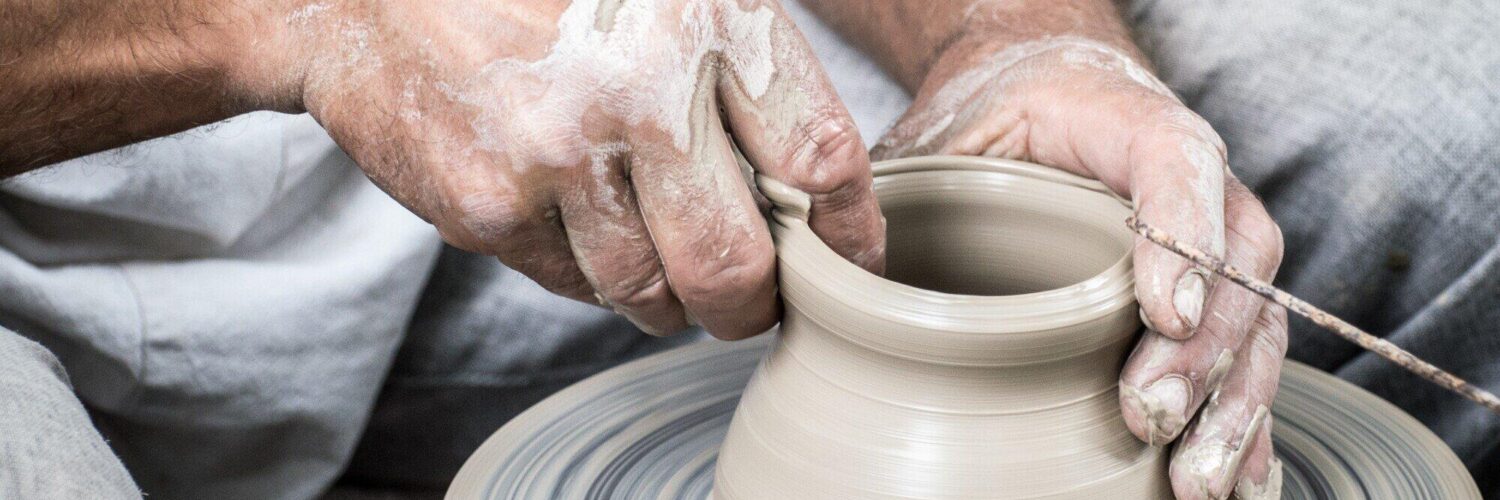There’s nothing quite like the feeling of crafting your own mugs and bowls. Whether you love doing pottery for the sheer joy of making or the potential to sell your work, it’s a craft you can do at home. That’s right – you don’t need a fancy facility.
Curious to learn more? Read on to discover how to create a DIY pottery studio at home!
Consider What You Want to Make
Are you hoping to produce pottery via the throwing method, where you use a pottery wheel? Or are you more interested in hand-building techniques? Your preferred method of making pottery can impact what equipment you’ll need to get.
With hand-building, you can make pinch pots or try coil-building. With these processes, you’ll be able to carefully shape clay to create mugs, salad bowls, and more. On the wheel, you can throw vases, plates, and tea sets.
It can pay to look at images of pottery to get ideas for colors, styles, and techniques you want to try. Studying art can inform your creations and spark new directions. You may prefer complex glazes, for instance, or perhaps you favor clean white glazes.
Also, consider what you’ll be doing with the objects you create. If you’re planning to run a pottery business, for example, take time to visit local craft shows to see what styles already exist. Look at pricing to make sure you’re competitive.
You may want to carve out a niche that sets you apart from the crowd. If there already are a lot of mugs featuring black and brown glazes, for instance, look into making other objects. Planters, egg cups, and butter dishes could be better choices.
Determine Which Clay to Use
Several factors can impact the type of clay you use. And the type of clay can impact what kiln you end up getting. You’ll have an easier time if you limit your clay use to a particular kind so you can buy it in bulk, too.
For instance, stoneware can be a good starting point. This type of clay is ideal if you’re making mugs and other items you’d typically use at mealtime. As a bonus, stoneware items can be put in dishwashers and microwaves without causing any problems.
For an option that doesn’t require as high of a firing temperature, you can go with earthenware. Just keep in mind this type of clay can’t produce dishwasher-safe objects. Additionally, it will need to be glazed to be safe for use with food.
If you have a better kiln, you can get porcelain. The catch is that you’ll need your kiln to reach much higher temperatures, and you’ll need to budget for the higher price of porcelain.
On the other hand, polymer clays are ideal if you’re working on a smaller scale. Smaller objects, like ornaments, can be pieced together with this type of clay. And you won’t need to invest in a kiln to fire them.
Get the Right Pottery Equipment
If you’re planning to throw pottery, you’ll need to get a pottery wheel. An electric wheel is the best way to go, as it won’t require you to apply pressure to make it spin continually.
Regardless of your approach to making pottery, you’ll need to get a ceramic kiln. Kilns are chambers where you place your creations, and the high temperatures cause a physical reaction. After several hours in a kiln, your ceramic pieces will harden and be ready for glazing.
You can get wood, gas, or electric kilns. If you’re just getting started, an electric kiln may make the most sense. Electric kilns are cost-effective, smaller, and simple to use.
With wood and gas kilns, you’ll need space for ventilation. Gas kilns are easy to use and control, but they cost more than electric kilns. Consider your budget and space requirements before purchasing one.
Plan on budgeting for clay and tools, too. Clay cutters, wire cutters, and loop tools are among the items you’ll need to have on hand. Plan on having a large table, too, where you can wedge your clay and work with it.
You’ll also need items like studio boards and pottery molds. Molds are especially useful if you’ll be using slabs to make your work. Molds will enable you to form the slabs into plates, trays, and other functional vessels.
And, of course, you’ll need glazes and tools to apply them. Tongs and sponges should be on your to-buy list. You’ll need large buckets, as well, for mixing glazes and dunking objects in them.
Establish Your Home Studio
Where will all of your pottery projects take place? You’ll need to set up a home studio space.
Ideally, you can devote space to your craft in a separate building. Maybe you have a toolshed or garage space. Or maybe you can build a small studio in your backyard.
You’ll need to house your kiln, wheel, and tables in the studio. You’ll also need to have plenty of shelving where you can store in-progress work. And tool storage is essential to keep everything in good shape.
With some processes, you need to let the clay harden to a certain point before firing. A climate-controlled space is optimal since you can control temperatures and humidity.
If that’s not possible, make sure to have fans and ventilation in your studio. You will need to keep some clay damp, too. Have plenty of bags handy you can use to wrap clay so it doesn’t dry out and crack.
And make sure to keep your studio clean. You don’t want dust to accumulate since it can impact your work. Smaller studios make this especially important.
Create a DIY Pottery Studio
A DIY pottery studio at home enables you to make new artwork whenever you want. You’ll need to secure a designated studio space with work surfaces and room for shelves. You’ll also need a kiln and potentially a wheel if you’re planning on throwing.
When you need more tips to bring your crafting dreams to life, check back for new articles!






Add comment